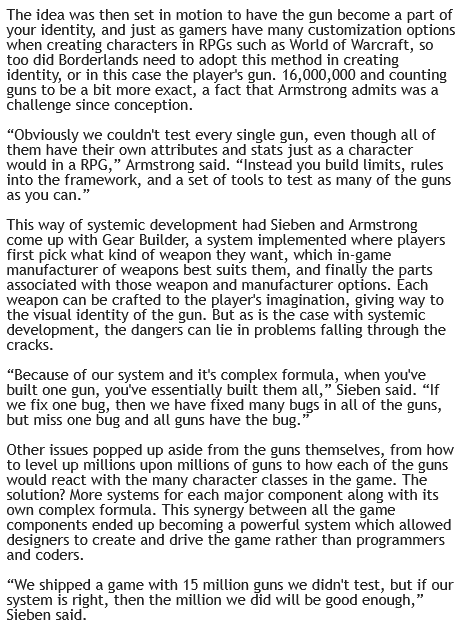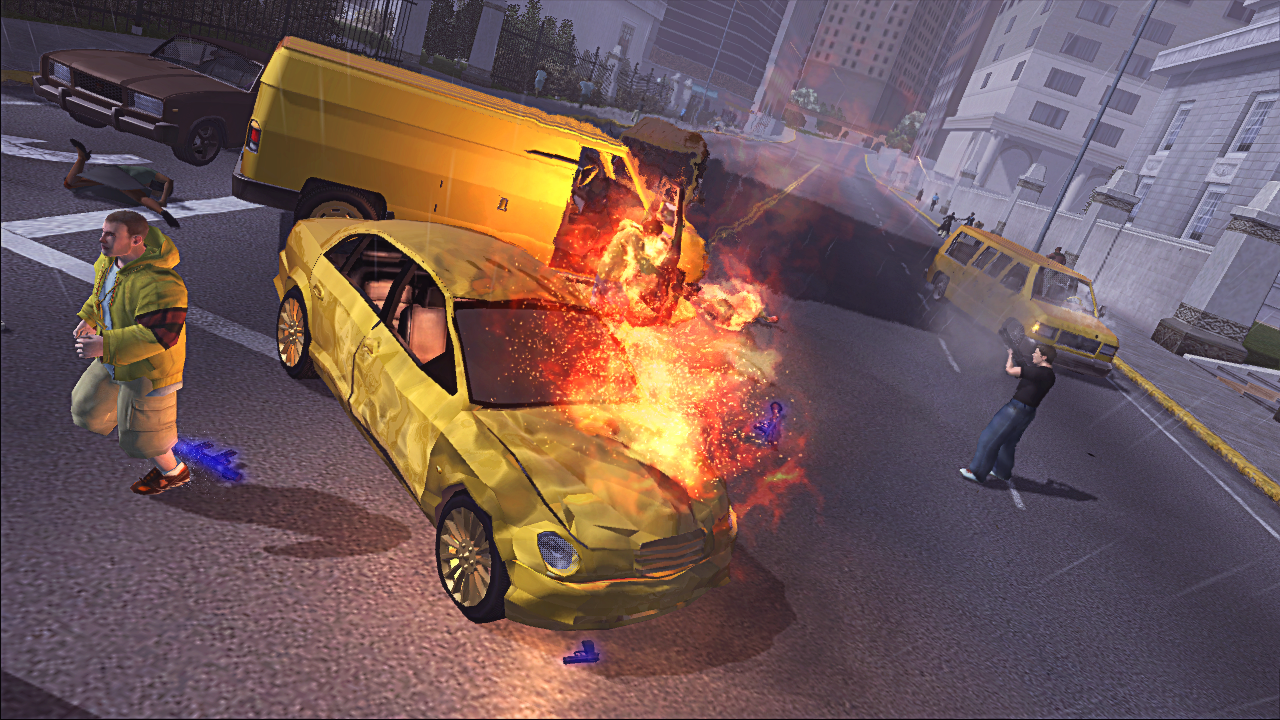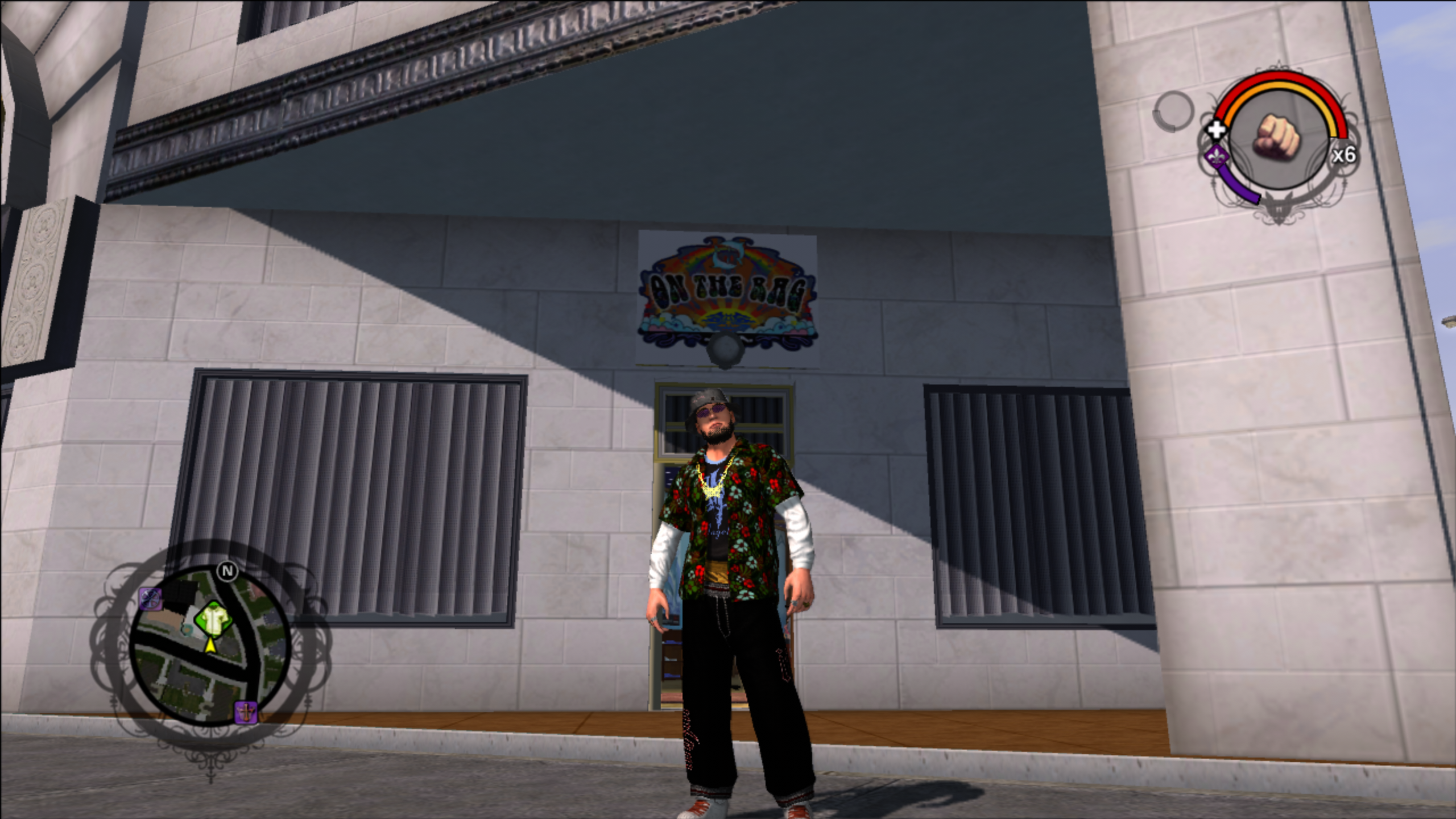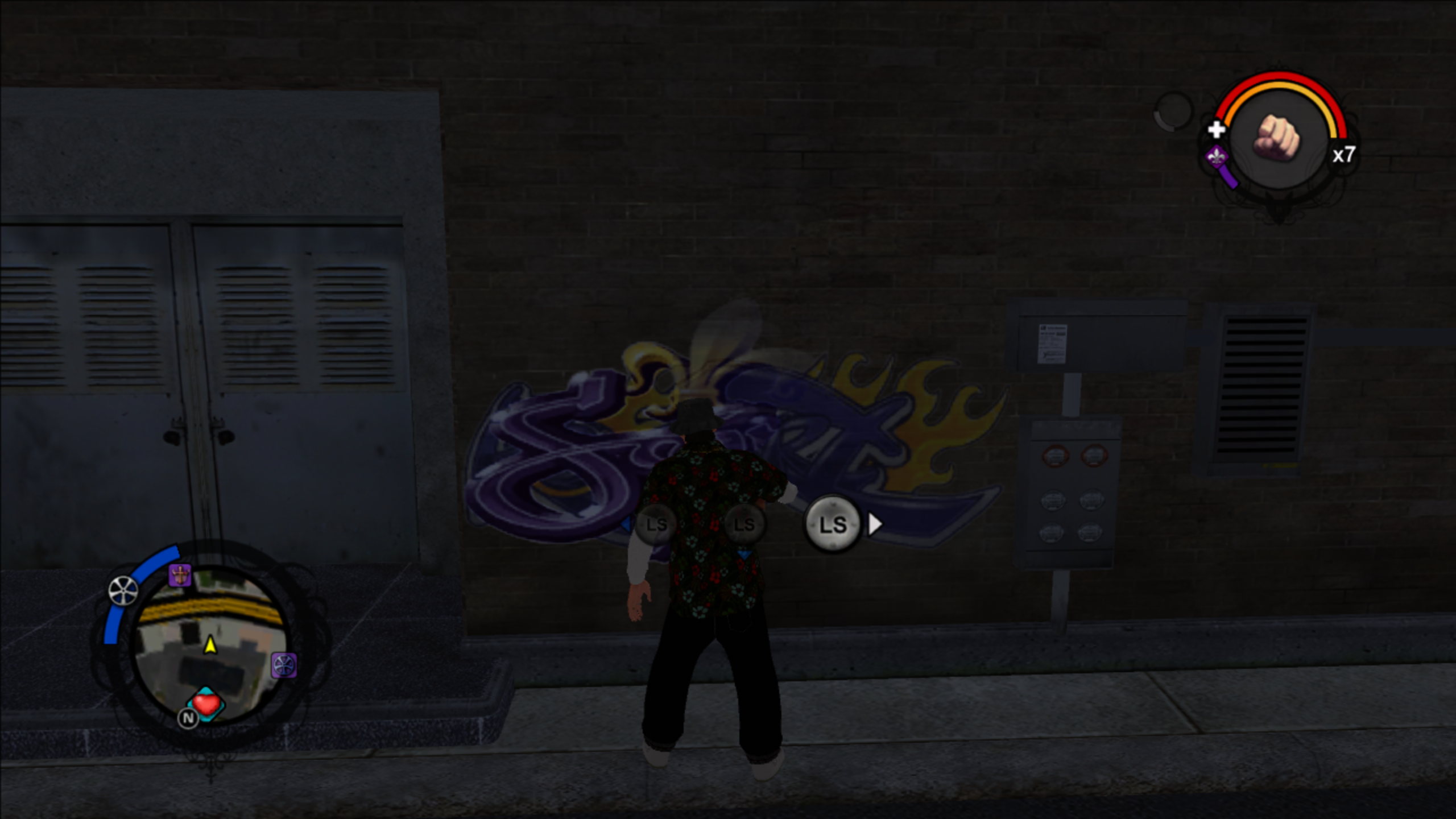Borderlands
Finding Nuggets Within Subpar Desserts
For full context, I recommend reading my reviews of the base game and its DLCs:
- Main game
- Zombie Island Of Dr. Ned
- Mad Moxxi’s Underdome Riot
- Secret Armory Of General Knoxx
- Claptrap’s New Robot Revolution

The FPS half was fitting for Gearbox, thanks to prior experience with Half-Life’s expansions and ports, Halo’s PC port, as well as having made the short-lived Brothers In Arms titles, so keeping it the primary focus for the genre hybrid is a sensible notion — when you actively play the entire package, however, it unveils how sporadic and borderline unfinished these shooting mechanics become. Although there’s some influence from how proficient you are with a type of gun, it doesn’t change that there’s “baked in” inaccuracy - physical or arbitrary - that detracts from the ‘feel’ of fires. The diceroll as to whether your sight lineup up to an enemy’s head connects as a headshot at the beginning is stringently the same as when you’re heading up to Pandora’s Vault, and it’s just as dubious upon flanking onto unsuspecting Bandits and Wildlifes that are only briskly walking in place. Not helping is the lack of feedback regarding the actual act of firing a gun; speccing into the Revolver subtype of Pistols meant that, no matter if I equipped the Masher variant or the Stock model, both share an eerily similar to exact same SFX that maims procedural generation systems Gearbox have tried to tout as one of the most tantalizing aspects of the game.
On that note, even if you haven’t played it, it’s easy to see where the inspirations lie: Randy Pitchford has verbally noted Diablo, alongside some NetHack and Ultima to boot, for crafting the idea of where to take Borderlands’ central loop. I won’t purport to have advanced knowledge of these games1, but my understanding likely matches Pitchford’s at the time: shallow and meek. Each new area encounter plays out nearly the same: enter a large, circular field or narrow, linear corridor, enemy hostility will activate and begin to rush straight towards you, pop several leads onto their body til they’re gone, loot the remains or open the chests, rinse and repeat. It’s unfair to overtly simplify the central loop if there wasn’t a core appeal to it, but I simply couldn’t “get” it personally. Every time I opened a prestige box or found a loose weapon from the corpses, the craftsmanship of the weapons I’m speccing unto turned up as sidegrades containing one or two vestigial new components, or were outright worse than what I had received hours prior. It also doesn’t help that said encounter design rarely, if ever, changes in function — the opening hours of Arid Badlands are what you will do unwaveringly up to and including the Eiridian Promontory, and perhaps even further on if you decide to venture onto the DLCs, Mad Moxxi’s especially for literally centralizing these as wave-based arena gauntlets.
It’s hard to feel the joy of looting and shooting when the loot provides little pleasure from doing and the shooting is so haphazardly handled. It also stings harder when you come to realize there’s very rare shot-type distinctions available for every gun available. Sure, Maliwan provides different Elements, and there’s Grenade Mods to help swap around depending on circumstances, but the actual shot spread for each gun is set in stone2. Moments where you get the TK’s Wave and its bouncy shotgun pellets and the Eridian cannons’ slow yet powerful projectile are few and far between.

Perhaps the most damning aspect - and the one that really clued in that something went wrong during development - is the actual state of the world and presentation. The soft, cel-shaded look the series has become known for was an “11th hour change”, and you can feel it due to the dull usage of brown/beige color toning in the desert area that rings less like an intentional choice of its Mad Max hallmarks, and more that there wasn’t enough time to accommodate this new shift in direction after its initial gameplay showings of a visage inspired by Rage or Gears Of War3. Add to that with the abundance of sidequests opening with "I need something killed/collected", and homogeny for all the different areas quickly sets in. The few times the game has captivating flair, it half feels like an accident, and half like it was a strong point that the original artstyle had its moments to begin with.
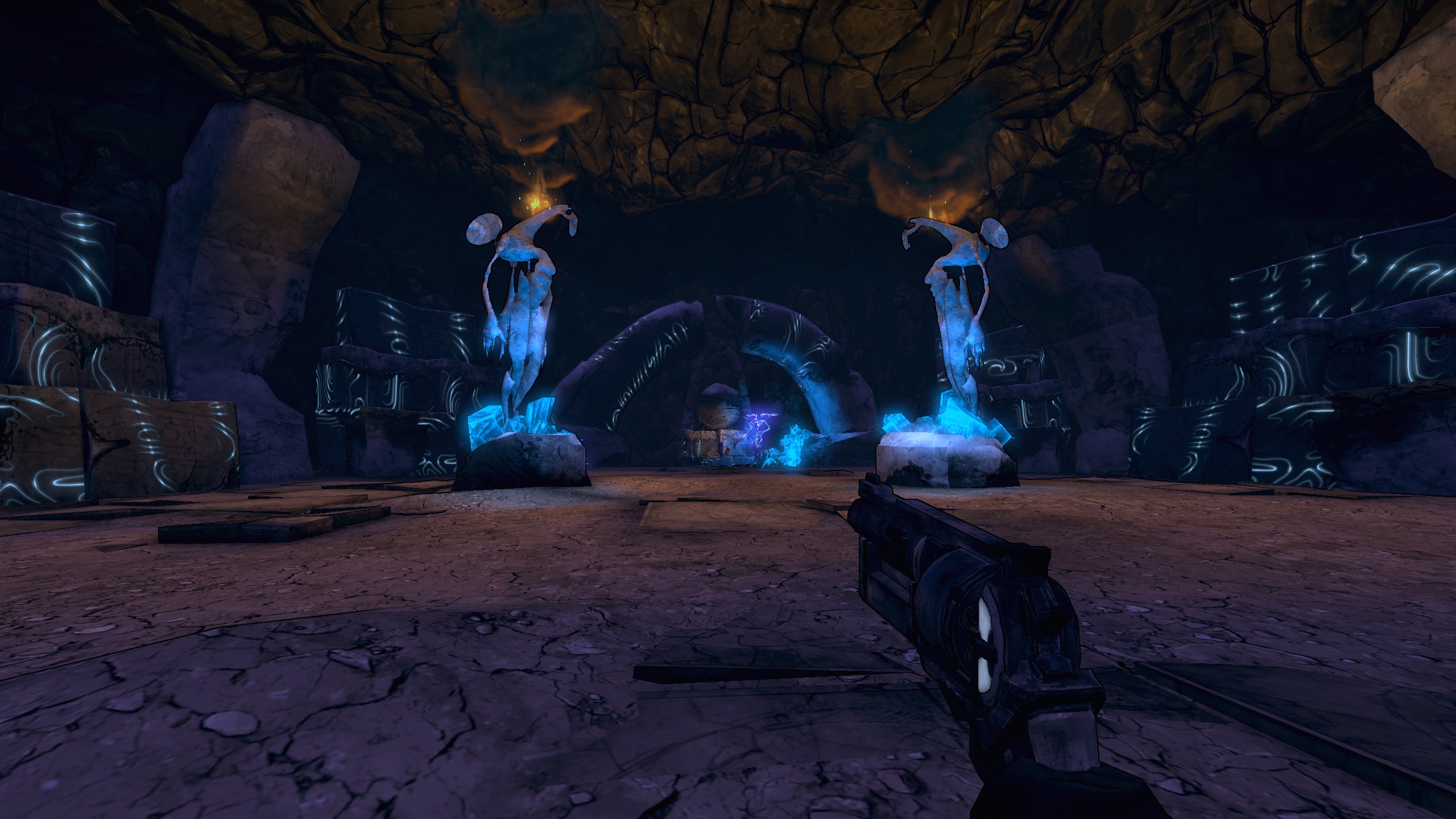
As for Pandora itself, it feels bare… but not in the way I feel was intended by Gearbox themselves, or the remnants of fans who praise this starting point. It tries to establish a loner, solemn walk, and excusing the cheap shot that is mentioning the 4-player multiplayer option, it doesn’t fully come together since you 1: convene to then cooperate with numerous NPCs so often that it deflates that tension and 2: there’s simply not enough backing substance to back that feeling. Walking through the fields of, say, New Vegas’ Mojave Desert or S.T.A.L.K.E.R.’s ZONE relays that solitude through varying means aside from enemy/location placements that Borderlands 1 never fully emphasizes. It likely doesn’t help the sandbox element aren’t particularly interesting to begin with: each major area has, at most, three “important” locations you always vacate towards, as well as a few dungeons off to each sides of their paths, and with the aforementioned toning issue, it only heightens that feeling of uncertainty and aimlessness that likely plagued development. Once again, the DLCs seem to be a response of some kind, since all four, to varying degrees, attempt something to spice up the environment design: CNRR contains a cave utilizing a lamp-path system to its different routes within; ZIoDN’s plays up the Halloween theming ala varying and well-known genre trappings; General Knoxx actually contains different vehicle types instead of just swapping out which turret you want on, all of which affect road combat and traversal.
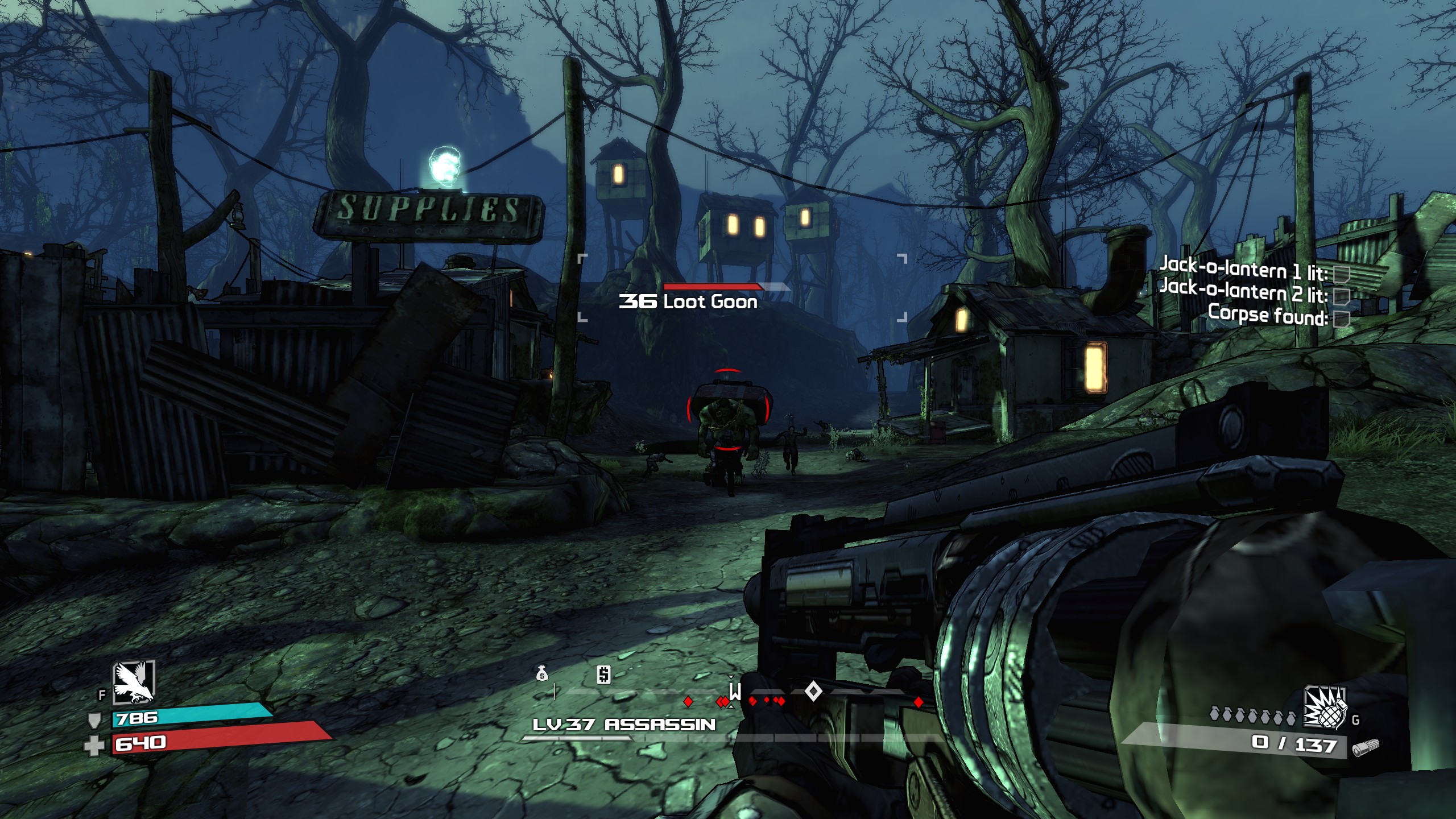
The one glimmer of hope within Borderlands’ systems is, surprisingly enough, the RPG half. For as much as these underbaked mechanics hold back the holistic quality, a few manage to keep the numbers game afloat, and as a result, it becomes particularly engrossing figuring out which skills to pick for your character’s build, and how they interact with the enemy’s arsenal. As someone that’s played as all four Classes throughout each playthrough, it was surprising to see them so radically different from one another in more than just a moniker. Mordecai, the character I played as this time, is a snowball effect of a decently strong range attacker to downright villainous assassin thanks to higher rate of fires and the ability to bypass enemy shields, thereby making headshot crits more potent than ever and making Crimson Lances, an enemy faction that’re all armored up, easier to handle which, combined with the Corrosion element and a few different grenade mods, was likely the intention. If there was any throughline between Brothers In Arms’ lite-strategy elements, it’d likely pertain to how these classes interact with each other, emerging for different gameplay plans and flanking opportunities. Although a shame the base game’s enemy roster largely fails to play to this system’s strengths, even to the point the DLCs are just barely enough to break away from its monotony, it’s at least carried from the conversations that can arise for how each player has handled the journey in differing manners, which circles back to the intended effect of the game’s idea. With varying fan tools and guides to help inform everyone as to what should be done - one of these being the more recent LootLemon database - it’s no wonder the game managed to become a success, and where Gearbox finally had an idea as to where the take the series in the future.

- About the furthest my expertise goes is trying out Ultima 4 for an hour before shelving it for the time being. Any desire to try Diablo out has dried from disinterest combined with the Activision/Microsoft boycott, and I honestly forgot NetHack was even a thing until now. ↩
- While remedied in the DLCs to varying degrees, it is best rectified with the General Knoxx DLC. The capstone of it, and something the player(s) can do repeatedly, is go on a mad dash looting spree of the fort, finding some high-rarity weapons to either use or sell, and is varied enough to feel rewarding when routing the timer out. This is probably the closest the game has ever gotten to instilling that sense of greedy pride and curiosity. ↩
- I learned of this footage thanks to YoDoops’ review of the game. Give it a read, it’s pretty good! ↩
